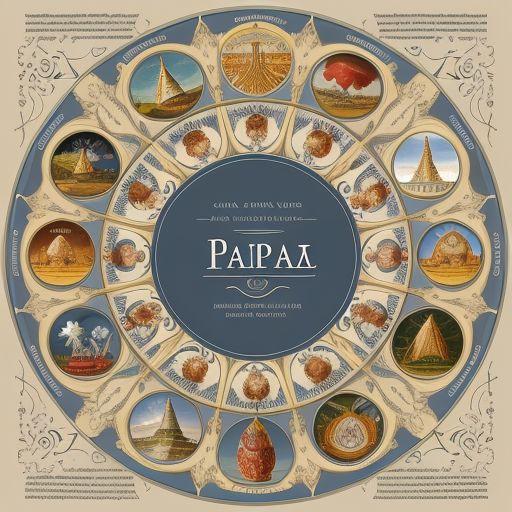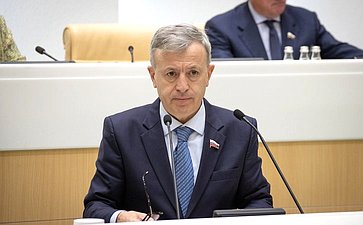Papal Name Selection: A Look At History And Future Possibilities

Table of Contents
Historical Trends in Papal Name Selection
The Significance of Choosing a Particular Name
The reasons behind a particular papal name choice are multifaceted and often deeply symbolic. Choosing a name isn't arbitrary; it's a deliberate act carrying significant weight. Consider John Paul II – a name chosen not only to honor his immediate predecessor, John Paul I, but also to evoke the legacy of numerous significant Popes John and Paul throughout history. This strategic naming served to create a sense of continuity and to build upon the established prestige of these names.
- Honoring significant predecessors: The choice often pays tribute to revered predecessors, carrying their legacy forward. Examples include the aforementioned John Paul II, connecting his papacy to the historical weight of both John and Paul.
- Symbolic resonance with a particular saint or virtue: Names frequently resonate with specific saints known for their virtues or particular achievements, aligning the new Pope with those qualities.
- Political or theological connotations: Subtle political or theological messages can be embedded in the name selection, reflecting the Pope's priorities or intended direction for the Church.
- Breaking with tradition or establishing a new identity: Occasionally, a Pope will choose an unusual name to signal a departure from established norms or to establish a distinct identity for their papacy.
The Evolution of Papal Names Over Time
Papal naming conventions haven't remained static. The evolution of papal names reflects the changing social, political, and religious landscape over centuries.
- Early Papal names and their origins: Early papal names often reflected common names of the time, with less overt strategic consideration.
- The rise and fall of popular names: Certain names, like John, Gregory, and Benedict, have enjoyed periods of considerable popularity, reflecting the enduring appeal of associated saints and historical figures. Others have fallen out of favor over time.
- The impact of historical events on name choices: Major historical events and shifts in Church doctrine can influence the selection of names, consciously or unconsciously.
- Regional influences on name selection: The regional origins and cultural backgrounds of Popes have subtly influenced naming traditions over the centuries.
The Process of Papal Name Selection
The Conclave and the Decision-Making Process
The selection of a new Pope takes place within the highly secretive environment of the papal conclave. The process is shrouded in tradition and emphasizes the importance of careful deliberation.
- The role of the cardinals in the selection: The cardinals, as electors, play a pivotal role in the decision-making process, weighing various factors in their deliberations.
- The influence of tradition and precedent: Tradition heavily influences the selection, with considerations for historical precedent and the symbolic weight of different names.
- The consideration of global perspectives: With the global reach of the Catholic Church, the cardinals consider the international implications and reception of a particular name.
- The balance between continuity and change: The choice seeks to balance continuity with the Church's historical legacy and the need for a fresh approach.
Factors Influencing Papal Name Choices Today
Modern considerations significantly impact the selection of a papal name. The process is no longer solely driven by historical precedent.
- Global appeal and recognition: The chosen name must be easily understood and recognizable across different languages and cultures.
- Avoiding names with negative historical associations: Cardinals are mindful of avoiding names with potentially negative historical connotations or associations.
- The influence of media and public perception: The media's role in disseminating information and shaping public opinion is now a key factor.
- The need for a name that is easy to pronounce and remember internationally: Simplicity and memorability are essential for effective communication and public recognition.
Future Possibilities in Papal Name Selection
Will Tradition Continue?
The future of papal name selection presents intriguing questions. Will tradition continue to hold sway, or will we see greater innovation?
- Arguments for preserving historical practices: The rich historical context and symbolic weight associated with traditional names provide strong arguments for maintaining current practices.
- Potential for innovative or unexpected name selections: A growing awareness of global diversity could lead to a more inclusive and diverse range of name choices.
- The impact of changing global demographics: The increasing global diversity of the Catholic Church might lead to a broader range of names reflecting this diversity.
- The role of modern communication in shaping public expectations: Modern communication channels influence public expectations and perceptions, impacting the cardinals' considerations.
Predicting Future Papal Names
Predicting future papal names is a fascinating exercise. Based on current trends, we might see:
- Names reflecting current global concerns: Names associated with peace, justice, or environmental stewardship might gain prominence.
- Names with strong historical or religious significance: The enduring appeal of names associated with significant figures in Church history will likely continue.
- Names that are both memorable and globally accessible: The need for names that resonate across cultures and are easy to remember will continue to be a priority.
- Names representing inclusivity and diversity: Names reflecting the Church's increasing global diversity could become more prevalent.
Conclusion
The selection of a papal name is a complex process, a fascinating blend of history, tradition, and future-oriented considerations. From the symbolic weight carried by each name to the carefully considered strategy behind their selection, the papal naming tradition remains a captivating aspect of the Catholic Church. Understanding the historical trends and potential future directions of Papal Name Selection provides valuable insight into the evolving nature of the Papacy. Further research into the specifics of individual papal name selections will only deepen your understanding of this intriguing subject. Start exploring the fascinating world of Papal Name Selection today – delve into the historical records and consider the potential future of this ancient tradition!

Featured Posts
-
 Plenarnoe Zasedanie Milli Medzhlisa Khod Zasedaniya I Prinyatye Resheniya
May 06, 2025
Plenarnoe Zasedanie Milli Medzhlisa Khod Zasedaniya I Prinyatye Resheniya
May 06, 2025 -
 Ddg Diss Track Dont Take My Son Aimed At Halle Bailey
May 06, 2025
Ddg Diss Track Dont Take My Son Aimed At Halle Bailey
May 06, 2025 -
 Butlers Generosity Gift To Spike Lee Celebrates Latest Nba Victory
May 06, 2025
Butlers Generosity Gift To Spike Lee Celebrates Latest Nba Victory
May 06, 2025 -
 Black Mirror Issa Rae Rashida Jones And Tracee Ellis Ross Share Insights In Essence Interview
May 06, 2025
Black Mirror Issa Rae Rashida Jones And Tracee Ellis Ross Share Insights In Essence Interview
May 06, 2025 -
 The Dating Life Of Tracee Ellis Ross Grief Growth And Self Respect
May 06, 2025
The Dating Life Of Tracee Ellis Ross Grief Growth And Self Respect
May 06, 2025
